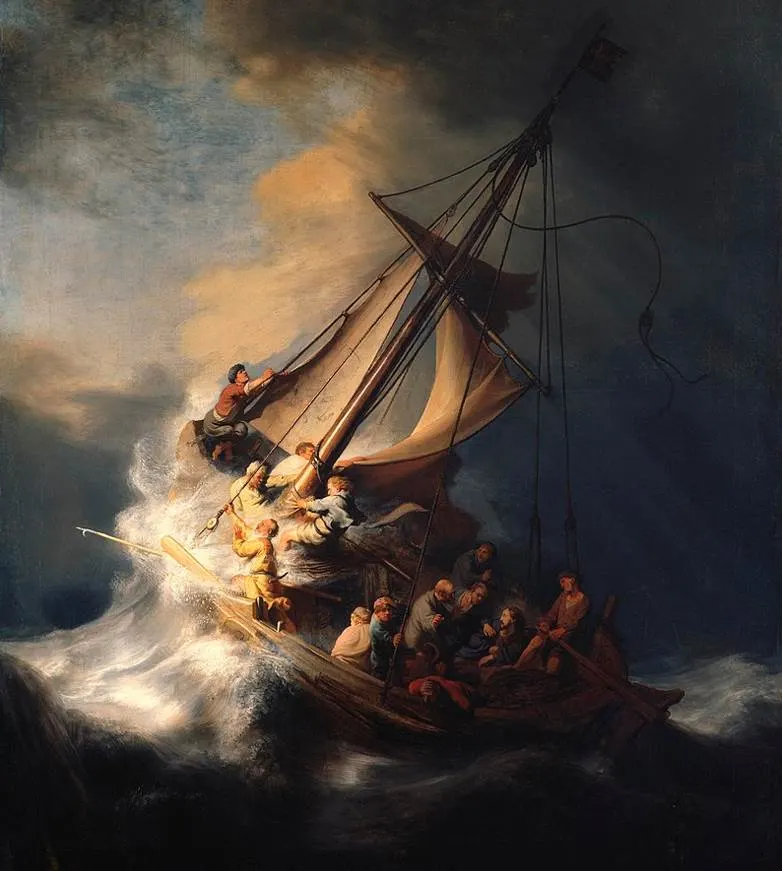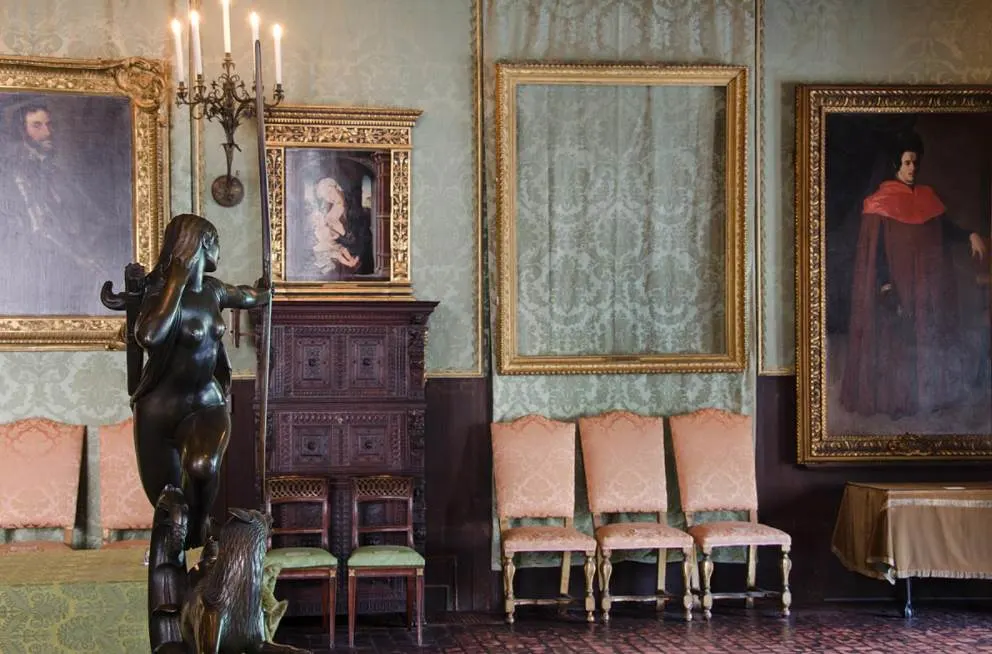One of the most renowned artists in Dutch history was already an incredible talent when he was still a teenager. He became a master in his early twenties and opened his studio in his hometown of Leiden in the 1620s.
As he gained recognition, Rembrandt van Rijn (1606-1669) produced one of the most remarkable artworks in his oeuvre. This was just a couple of years after opening his shop with his good friend and fellow painter Jan Lievens (1607-1674).
Let’s take a closer look at some of the most interesting facts about The Storm on the Sea of Galilee by Rembrandt, a fascinating painting for several reasons.
1. It was painted in the early phase of Rembrandt’s career
The Storm on the Sea of Galilee is considered to be one of the ultimate masterpieces of Rembrandt’s early phase. He opened his studio in Leiden in around 1624/1625 and eventually moved to Amsterdam in 1631.
The city was becoming the center of commercial activity in the Dutch Republic at the height of the Dutch Golden Age. Yes, this was a period in which earning commissions from wealthy patrons wasn’t a problem for a young man as talented as Rembrandt.
He produced this painting in the year 1633, a period in which he earned a lot of money as a portrait painter, and the year before he joined the local guild of renowned painters in Amsterdam.
He got married to his wife Saskia van Uylenburgh (1612-1642) in 1634 and moved into a new house in a booming area in 1635. This house is now the home of the “Rembrandt House Museum.”

2. It depicts a popular Biblical story from the Gospel of Mark
The painting depicts the story of Christ and his followers who are having a lot of trouble in keeping their small fishing boat under control on the Sea of Galilee.
This is a freshwater lake in modern-day Israel and the lowest of its kind on the planet with a surface area of between 215 and 209 meters (705 and 686 feet) below sea level.

This story is explained in great detail in the fourth chapter of the Gospel of Mark. It’s one of the miracles performed by Jesus Christ referred to as “Calming the Storm.” The painting depicts the moment shortly before Jesus turned the wild Sea of Galilee into a calm body of water.

3. It’s a unique work in the artist’s oeuvre for a particular reason
The Baroque master mainly focused on portraits and religious and mythological paintings during his early phase in Amsterdam in the 1630s.
This was a period in which he was influenced by the Baroque paintings of one of his idols, renowned Flemish painter and diplomat painter Peter Paul Rubens (1577-1640). His paintings became bigger and his brushwork a lot looser than the extremely detailed artworks he produced a decade earlier.
The Storm on the Sea of Galilee is an incredibly fascinating work of art because it’s the only seascape that Rembrandt ever painted. This is remarkable because he produced well over 600 oil paintings, 400 etchings, and over 2,000 drawings during his career.
Despite the switch in style during this decade, the bright colors and relatively compact brushwork in this painting is still reminiscent of the early period in Rembrandt’s career.
4. Only one of the figures in the boat remains calm
The sudden storm has turned the Sea of Galilee into a wild force of nature, something emphasized by the huge wave that crashes into the bow of the boat.
The fishermen are struggling to gain control, a metaphor for the frailty of human beings compared to the immense power of nature.
The chaos is complete as one man can be seen hanging over the railing and vomiting as the others try to avoid crashing into the rocks in the bottom left corner of the painting.
Only one man in the boat can be seen calm as can be, Jesus Christ. He is depicted just moments before he presumably spoke the words that turned the event into a spiritual exercise:
Peace! Be still! Why are you afraid? Have you still no faith?
5. The artist included himself in the boat as well
The painting is a masterpiece in Rembrandt’s oeuvre because it instantly captures the viewer’s attention. The exaggerated drama of the Baroque era is combined with a sense of realism as we watch this drama unfold
Rembrandt loved to paint himself as he produced over 40 self-portraits. He also often included himself in his paintings, including in The Storm on the Sea of Galilee.
All fishermen scramble to keep the boat afloat, except for Jesus Christ who just woke up and who is about to calm the sea. One man stares directly at the viewer and this is the artist’s self-portrait.

6. The composition was influenced by a print that was published in 1583
Rubens wasn’t the only Flemish artist that influenced Rembrandt during this period of his career. The composition of this particular painting was influenced by a print made by Adriaen Collaert (1560-1618), a Flemish engraver.
The original design of this print was produced by Maerten de Vos (1532-1603), another Flemish artist of the Mannerist era (late Northern Renaissance). He is considered to be the leading history painter of his time.
This print was called “Christ Sleeping during the Storm” and published as plate 8 in the 12-part “Vita, passio et Resvrrectio Iesv Christ.” This work was first released in Antwerp in the year 1583

7. How big is The Storm on the Sea of Galilee by Rembrandt?
Because Rembrandt wanted to emulate the monumental mythological and historical paintings of his colleague Peter Paul Rubens, the size of the paintings he produced during the 1630s was much bigger than those a decade earlier.
This isn’t reflected in this work as the oil on canvas painting is medium-sized and has dimensions of 160 × 128 centimeters (62.99 × 50.39 inches).
8. Where is the painting located today?
One of the most remarkable facts about The Storm on the Sea of Galilee is that its whereabouts are unknown since 1990. This was the year that the painting was stolen, together with 12 other famous paintings, from the Isabella Stewart Gardner Museum in Boston, Massachusetts.
It’s considered to be the biggest art theft in US history as the combined value of the 13 paintings that were stolen is estimated to be around $500 million.
Because of this infamous event, the painting has been featured in multiple movies and TV shows. It’s also featured in a documentary about the heist that was released on Netflix in 2021 called “This is a Robbery: The World’s Biggest Art Heist.”
It wasn’t the only Rembrandt artwork that was stolen as a self-portrait and “A Lady and Gentleman in Black” (1633) were stolen, as well as “The Concert” by Johannes Vermeer (1632-1675).

